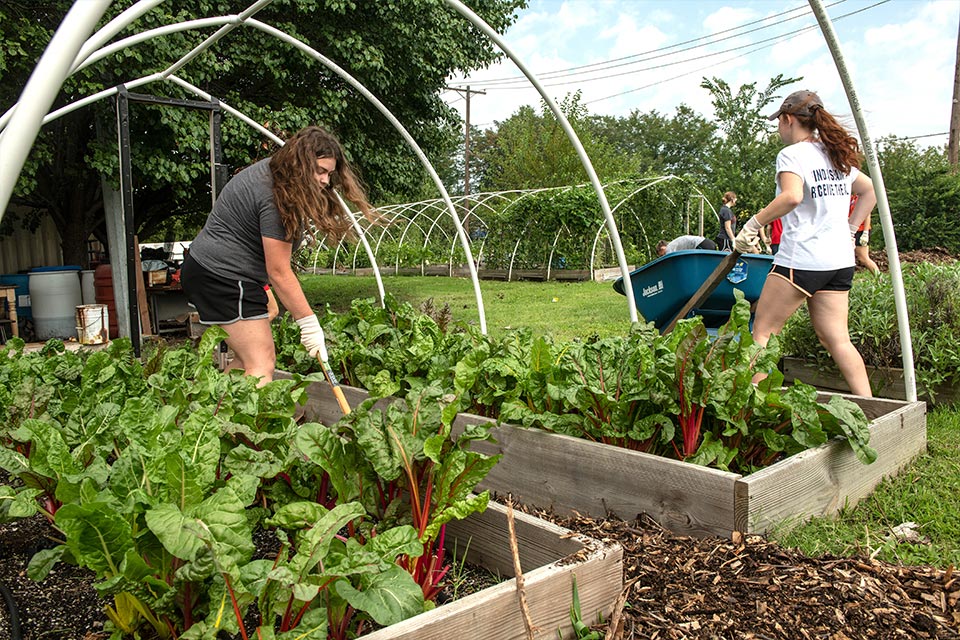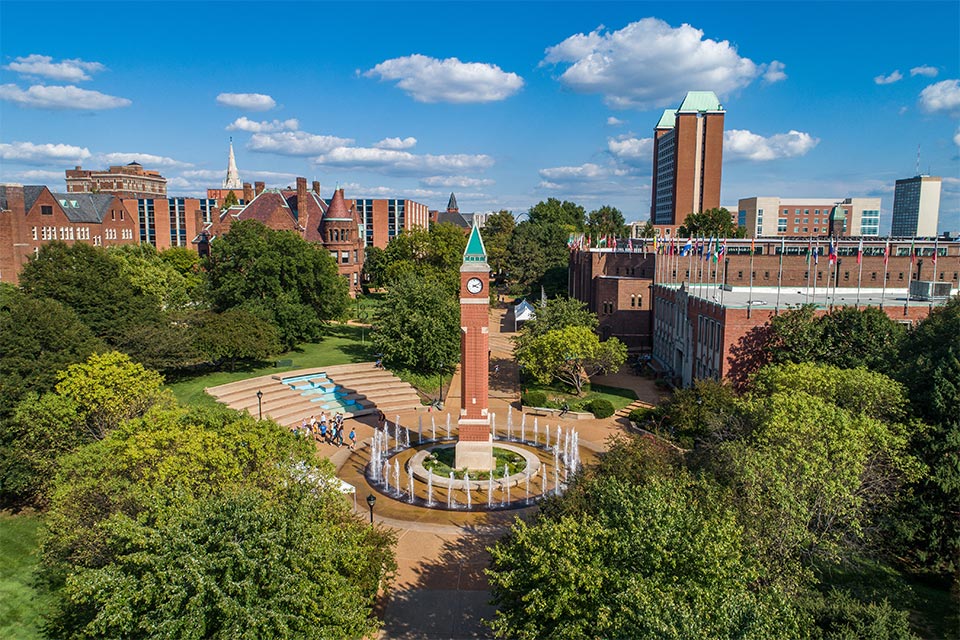Top Green Spaces on SLU's Campus
From an annual RecycleMania event to water-bottle filling stations around campus and sustainable options at most dining locations, Saint Louis University is doing its part to protect the earth today and every day of the year.
Behind the scenes at SLU, the Green Billikens student organization and the Office for Sustainability and Benchmarking are always looking for new ways SLU can be a better partner to our environment. Last year, SLU became the first higher educational institution in the state to participate in Ameren Missouri’s Pure Power Program, which aims to help reduce the negative health impact of ozone, fine particles, acid rain and regional haze, but here are five other ways the campus is going green.
1. Recent Campus Construction
SLU’s Doisy Research Center — equipped with an energy-efficient heating and cooling system and furnished with recycled steel, concrete, carpeting and materials — is Leadership in Energy and Environmental Design (LEED) Certified.
The University intends to pursue the same LEED-certification for the new Sinquefield Science and Engineering Center that will be completed this summer, while both Spring and Grand residence halls, SLU’s newest campus living options, were built to LEED silver standards.
Both residence halls were positioned to maximize sun exposure for daylight harvesting. Spring Hall was constructed with at least 20 percent recycled and 20 percent regional materials, while Grand Hall uses reflective materials and abundant vegetation in its landscaping to reduce its urban heat island impact.
Did You Know: The University’s residence halls are part of the EPA’s Green Power Partnerships.
2. SLU's Organic Teaching Garden
Located on the south side of campus, SLU’s organic teaching garden combines the study of nutrition and dietetics with culinary arts and a focus on sustainable food systems. The garden includes an urban orchard with 61 fruit trees. Produce from the garden is used at Fresh Gatherings Café and the Campus Kitchen project.
Did You Know: SLU nutrition students have implemented a Gardens to Table program at seven inner-city
schools across the St. Louis area.
3. Flowerbeds at Monsanto and Shannon Halls
As part of the Milkweeds for Monarchs: The St. Louis Butterfly Project, SLU's Grounds Services planted approximately 300 square feet of flower beds — two outside Shannon Hall and one just west of Monsanto Hall — with purple and orange coneflowers, goldenrods, bee balm asters, milkweed and butterfly weeds. The plantings are appealing to butterflies and include plants native to Missouri.
Did You Know: For the past 10 years, SLU has followed an initiative that 50% of plants used on campus be native to Missouri. Varieties planted include blue wild indigo, aster, coreopsis, purple coneflower, rattlesnake master, wild bergamot, yellow gray coneflower, goldenrod, and golden alexander.
4. Green Spaces Across Campus
SLU was designated an official Tree Campus USA in 2018 and 2017. To receive the designation, the campus must have a Tree Advisory team made up of faculty, staff and students, a campus tree care plan, service learning projects, dedicated funds for tree care and an Arbor Day celebration including planting trees. Whenever possible, native trees are used on campus. Plus, the majority of all yard waste at SLU is composted and reused on-site.
Did You Know: There are about 2,000 trees on the northern portion of campus alone.
5. Busch Student Center Campus Stormwater Management System
Four engineering students were behind the design of this stormwater management system, which was put into place on the east side of the Busch Student Center, an area that had been prone to flooding and erosion. The students’ plan, developed as part of the EPA's Campus RainWorks Challenge, includes three rain barrels, two bio-retention basins, a pervious path, and re-grading of the entire site. The installation of 2,585 square feet of impervious surface redirects around 7,473 cubic feet of water from the sewer system.
Did You Know: Saint Louis University was a Charter Participant in the Association for the Advancement of Sustainability in Higher Education's (AASHE) Sustainability Tracking Assessment and Reporting System (STARS) and currently has a bronze rating.


















